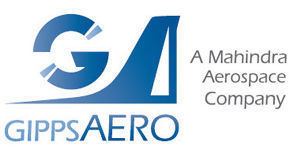Industry Aerospace Website gippsaero.com Founded 1977 | Products Aircraft Headquarters Morwell Parent organization Mahindra Aerospace | |
 | ||
Aircraft designed GippsAero GA8 Airvan, Gippsland GA200 | ||
GippsAero (formerly Gippsland Aeronautics) is an Australian aircraft manufacturer based at Latrobe Valley Airport in Morwell, Victoria. The company builds single-engined utility aircraft. These include the multi-role GA8 Airvan and the agricultural GA200 Fatman. The company has been majority owned by Indian conglomerate Mahindra Group since 2009.
Contents
History
Gippsland Aeronautics was founded by Peter Furlong and George Morgan. The company started operations at the Latrobe Regional Airport in Morwell in the 1970s as an aircraft maintenance and modification business working for large organisations such as the National Safety Council of Australia and Esso Australia, as well as local commercial operators.
During the late 1960s and early 1970s, Peter Furlong and John Brown were pilots, builders, fabricators and maintenance personnel for, amongst others, the Latrobe Valley Aircraft Club and the Ultra Light Club of Australia.
The late John "Brownie" Brown was a builder of timber aircraft. Brownie was involved with the second airframe of the Australian designed Corby Starlet in the mid-1960s. He later built the first Australian example of the Volmer Sportsman amphibian aircraft (VH-TUB).
Brownie and Pete continued to service aircraft together until the mid-1980s when Brownie was diagnosed with cancer.
GA200 Fatman
The modification of agricultural aircraft to improve capability and safety marked the beginnings of Gippsland Aeronautics' aircraft design and manufacturing business as it stands today. The company increasingly modified five agricultural Piper PA-25 Pawnees in the mid-1980s to the point where it was decided to certify a new design.
In 1991, Gippsland Aeronautics' first indigenous design, the GA200 Fatman, achieved Australian airworthiness certification. The certified production GA200 Fatman (also referred to unofficially as the GA200B) had a lifting capacity of 800 Litres with a 250 hp engine.
In 1993, the company certified a new model, the GA200C Fatman with the capability of lifting one tonne (1050 Litres) with a 300 hp engine, giving the aircraft a 30-50% better performance than any aircraft in its class. In the late 1990s, Fatman production was scaled down to make way for the Airvan.
GA8 Airvan
Despite the success of the Fatman variants, profitability was too dependent on the roller coaster cycles of the agricultural industry world wide. Subsequently, Gippsland Aeronautics' second new design, the GA8 Airvan, was conceived by directors/designers Furlong and Morgan as a utility transport to replace the Cessna 206/207 and DHC Beaver. Recognising the Cessna 206 as "one of the world’s best workhorses", the pair saw the potential niche market for a piston-engine aircraft that could carry more passengers. This would improve the operators’ profitability without going to the expense of purchasing a turbine powered aircraft.
Thus the high wing, eight seat GA8 Airvan was born using the design of the GA200C as a basis. Certification commenced in 1993 with the building of the first prototype/proof of concept aircraft.
After eight years in development, the GA8 Airvan was type-certificated by the Australian Civil Aviation Safety Authority to FAR 23 Amendment 48 requirements in December 2000 and subsequently updated to Amendment 54 status in early 2003. This was followed by certification by the United States Federal Aviation Administration and the Canadian Transport Canada in the same year. The European Aviation Safety Agency (EASA) certificated the Airvan in 2005.
The GA8 Airvan has now achieved export sales in the UK, Holland, Germany, Indonesia, New Zealand, South Africa, Botswana, Mozambique, Lesotho, USA, Canada and Belize in Central America, in addition to in-country sales in Western Australia, Queensland, Victoria, South Australia and the Northern Territory.
In October 2006, Gippsland Aeronautics announced that "the turbocharged prototype aircraft has commenced flight testing. The chosen engine is the Lycoming TIO 540 AH1A engine, which is a turbocharged version of the currently installed normally aspirated engine."
Developments and future products
On 18 June 2008, Gippsland Aeronautics announced it had won bidding to take over the type certificate of the GAF Nomad, and would probably be restarting production. The twin-engined, 18-seat reborn Nomad will be called the GA18, and will be re-engineered with new engines, propellers, glass cockpit and weight-saving measures. It is planned to bring it into service after the development and certification of the new 10-seat GA10.
In December 2009, Mahindra Aerospace Pvt. Ltd. (MAPL), belonging to Mahindra Group of India acquired a 75.1% majority stake.
In March 2011, at the 2011 Australian International Airshow, GippsAero announced the GA10. A development of the 8-seat GA8 Airvan piston-engined aircraft, the GA10 design has been stretched and re-engined with a turboprop engine to increase seating and payload capacity. It is planned for its first flight to take place in October 2011 and be ready for service in March 2013.
